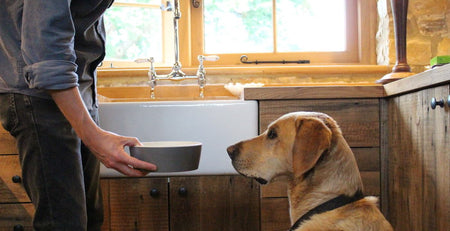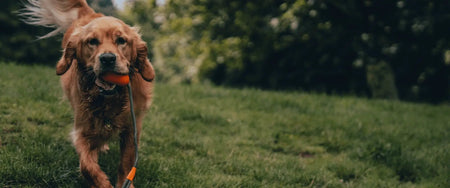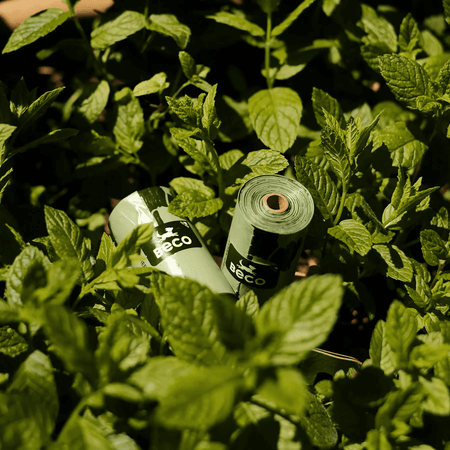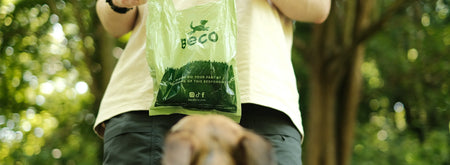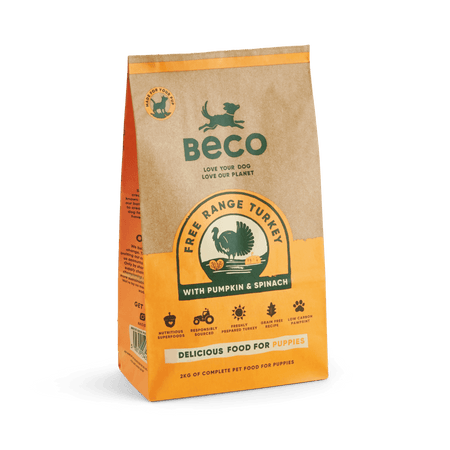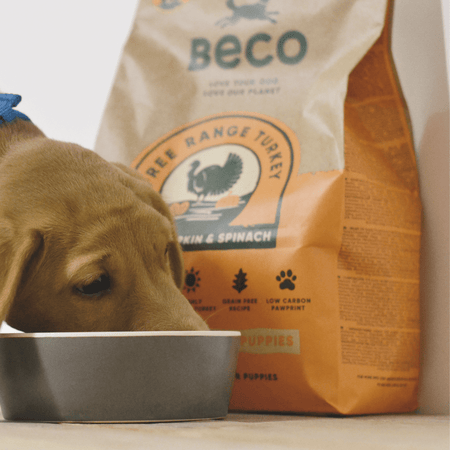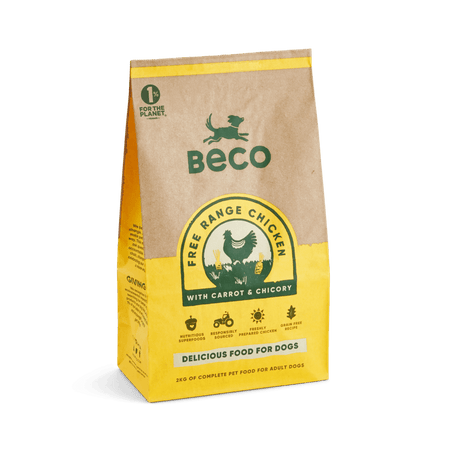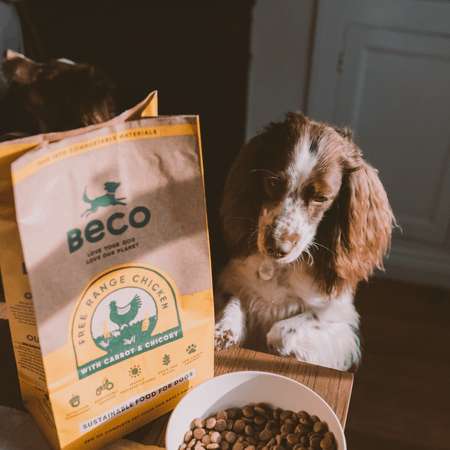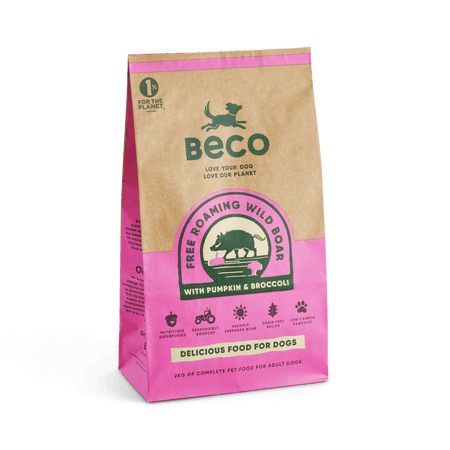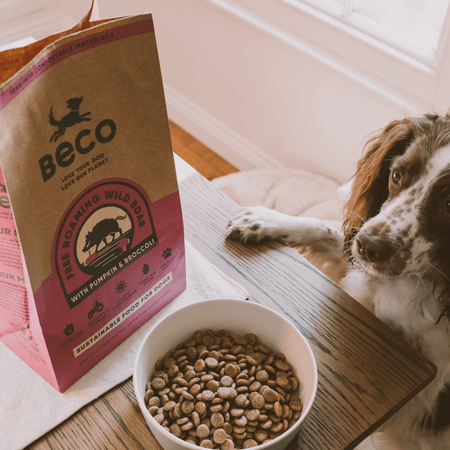For many new puppy owners, navigating the intricacies of puppy nutrition can be a maze of questions. From wondering about the right brand to pick, to pondering over the appropriate feeding schedule, there’s a lot to consider.
One of the more common dilemmas? Deciding when to switch from soaked to dry kibble (the answer is around 8-12 weeks).
Soaking puppy food ensures your young pup gets the much-needed moisture reminiscent of their early days with their mother's milk. However, as they grow, their dietary needs evolve. In this guide, we'll explore the right time to make that transition and delve deep into the reasons, benefits, and tips to ensure your puppy has a smooth dietary journey. Let's dive in!
Key Takeaways
Puppies typically stop needing soaked food between 8-12 weeks.
Abrupt dietary changes can upset a puppy's stomach.
Over-soaked kibble may ferment and harm your pet's health.
Solid food aids dental health and is cost-effective.
Wet food or a mixture might be necessary for some puppies transitioning.
The Role of Moisture in a Puppy's Diet
During the early weeks of a puppy's life, moisture plays a crucial role in their nutrition. Puppies derive the majority of their hydration from their mother's milk, which is rich in moisture. As they transition to solid foods, many pet owners opt for soaked kibble to mimic this high moisture content.
However, as the puppy grows and their digestive and dental systems mature, the necessity for such high moisture content decreases. While transitioning to dry kibble, it's not just about dental benefits or convenience. It’s about understanding and adapting to the evolving hydration needs of your puppy.
𝐢 Water Watch: With the reduction in moisture from their food, ensure puppies have constant access to fresh drinking water. It helps in digestion, nutrient absorption, and maintaining overall health.
Why Do Owners Stop Soaking Dry Food?

As puppies grow, they undergo numerous changes, both in behaviour and physically. One of these changes is the eruption and development of their adult teeth.
With these new teeth, puppies can efficiently munch on dry kibble without water. This means that over time, there's no longer a need to continue the practice of soaking their food.
Furthermore, while there's no inherent issue with soaking puppy food, many dog owners find it more convenient to serve dry food. The odour of soaked food isn't always the most delightful, and it requires additional preparation time.
Another notable concern with soaked kibble is the risk of fermentation. If left uneaten for over 30 minutes, soaked food can begin to ferment, posing health risks to your fur buddy.
When Should You Stop Soaking Puppy Food?
The ideal time frame to consider when to stop soaking puppy food is between the 8th and 12th week. Like most transitions in a puppy's life, it's best to ease them into new routines, including dietary ones. Changing their diet suddenly could potentially upset their sensitive stomach. So, when thinking about when puppies can eat dry food without water, it's pivotal to make the transition gradual.
Signs Your Puppy is Ready for Dry Kibble
Fully Erupted Adult Teeth
One of the primary indicators that your puppy may be ready to transition to dry kibble is the full emergence of their adult teeth. These stronger teeth can handle the crunch of dry food.
Interest in Crunchy Snacks
If your puppy is showing interest in and easily consuming crunchy treats or toys, it might be a sign they’re ready for the texture of dry kibble.
Faster Consumption of Softened Food
If your puppy quickly eats their soaked food as if they’re impatient or seems to enjoy chewing the less soaked bits more, it could indicate a preference for harder textures.
Health Benefits of Transitioning to Dry Kibble
Dental Hygiene
Chewing dry food helps in scraping off the plaque from your puppy’s teeth. This natural abrasive action reduces the risk of dental diseases.
Improved Jaw Strength
Regularly chewing on dry kibble can strengthen your puppy's jaw muscles, aiding in their overall jaw development.
Reduced Caloric Intake
Soaked kibble may lead to overeating because it can be easier for the puppy to consume large amounts quickly. Dry kibble can help in portion control.
The Art of Transition: Best Practices

Gradual Reduction
Instead of an abrupt halt, reduce the amount of water you mix with the kibble gradually over several days. This allows your puppy to adjust to the change in texture.
Observe for Choking Hazards
While transitioning, ensure that the puppy isn’t trying to swallow large chunks without proper chewing, which can be a choking hazard.
Ensure Fresh Water Availability
As your puppy transitions to dry kibble, they’ll need more water to compensate for the lack of moisture in their food. Ensure fresh water is always available.
𝐢 Reminder: Always observe your puppy's behaviour after changing their diet. Their activity, mood, and digestion can provide clues about their comfort with the new food.
Handling Picky Eaters During Transition
Flavour Enhancers
Sprinkle a little bit of low-sodium broth or a special dog gravy over the dry kibble to make it more appealing for picky eaters.
Consistent Feeding Times
Maintain consistent feeding times. This not only helps in digestion but also sets a routine, making the transition smoother.
Positive Reinforcement
Praise your puppy when they eat the dry food. Associating positive feedback can encourage them to adopt the new texture.
Table: Puppy Feeding Journey
| Age (weeks) | Food Type |
|---|---|
| 3-4 | Soaked kibble |
| 5-7 | Gradually reducing water content |
| 8-12 | Transition to dry kibble or mixture |
What are the Next Steps?
After ceasing the soaking of your puppy's kibble, you've got options! Depending on your puppy's preference and nutritional needs, you can either give them solid food, wet food, or a mixture of both:
Solid Food
Opting for dry kibble without water is a practical choice. Solid food not only boasts an array of nutritional benefits but also has practical benefits. It's easier to store, typically lasts longer, and can even aid in maintaining your puppy's dental health by helping scrape away tartar. On top of that, dry food often proves more economical in the long run.
Wet Food
But what if your puppy doesn't take to the dry food immediately? That's where wet food enters the scene. Some puppies, especially during their teething phase, might find wet food more palatable and easier on their gums. This form of diet can be an intermediary step before they wholly shift to dry food.
Mixture of Both
If your puppy loves their kibble but is slightly hesitant about the dry texture, a hybrid solution is mixing a bit of wet food into their kibble. A splash of wet food can make the entire meal more appealing, acting as a flavorful topper. This ensures they get the nutrition from the kibble while enjoying the enticing taste of wet food.
Dealing with Digestive Changes
Monitor Stool Consistency
Transitioning can sometimes cause changes in stool consistency. If you notice prolonged diarrhoea or constipation, consult a vet.
Probiotics for Puppies
To support their digestive system during the transition, consider adding a vet-approved probiotic to their diet.
𝐢 If your puppy hesitates with dry kibble, consider mixing a bit of wet food or a tasty broth initially to enhance flavour and ease the transition.
Frequently Asked Questions (FAQs)
Should I Soften My Puppy’s Food?
Absolutely, especially when they're very young. Puppies’ teeth aren't fully developed in their initial weeks. Softened kibble is gentle on their developing teeth and easier on their digestion.
As for how to soften dog food for puppies, you can do so by mixing water or puppy milk replacer into the kibble and letting it soak. However, always remember how to soak dog food properly by ensuring it doesn’t sit out for too long to avoid fermentation.
How Long Should I Soak the Puppy Food?
For young puppies, soak the kibble for no more than 15-30 minutes. This allows the kibble to soften adequately without losing essential nutrients or risking fermentation.
How Can I Tell if Soaked Kibble Has Fermented?
Fermented kibble will have a sour or off-putting smell. It might also appear slimy or have a change in colour. If you're unsure, it's best to discard the food and provide a fresh batch to ensure your puppy's health.
Can I Soak Puppy Food Overnight?
It's not recommended to soak puppy food overnight, especially at room temperature, due to the risk of fermentation and bacterial growth. If you must prepare in advance, ensure it's stored in a cool place or the refrigerator and used within a few hours.
Is it Okay to Mix Water Directly into the Dog Food Bag?
No, it's not advisable. Adding water directly to the bag can cause the entire batch to become mouldy or ferment. Always separate the portion you plan to soak and add water in a bowl.
When Can Puppies Eat Dry Food Without Water?
Typically, by the age of 8-12 weeks, puppies can start transitioning to dry kibble without water. However, always monitor your puppy to ensure they're comfortable and eating properly.
How to Soften Dog Food for Puppies if I Don't Have Much Time?
If you're in a hurry, using warm (not hot) water can expedite the softening process. Ensure the food is soaked thoroughly and give it about 5-10 minutes to soften.
Should You Wet Puppy Food if it's Not Kibble?
If you're feeding your puppy a type of food that isn't kibble, like freeze-dried or dehydrated food, always follow the manufacturer's instructions. Some may require water addition to rehydrate and ensure proper digestion.
Final Thoughts
Navigating your puppy's dietary needs can be a bit of a maze, especially with concerns like should you wet puppy food or wondering about the precise time when puppies can eat dry kibble.
But with knowledge and a bit of patience, you can ensure your furry friend gets the best nutrition tailored to their growth and development stages. Remember, every puppy is unique; while some might relish dry food immediately, others might take some time. The key is observation, patience, and of course, lots of love. Why not get some of our delicious puppy kibble for your pup to try!

